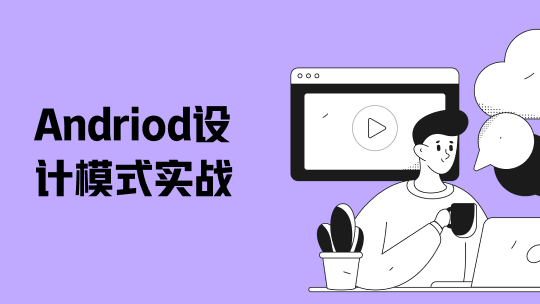Java 8 API添加了一个新的抽象称为流Stream,可以让你以一种声明的方式处理数据。Stream API可以极大提高Java程序员的生产力,让程序员写出高效率、干净、简洁的代码。这种风格将要处理的元素集合看作一种流, 流在管道中传输, 并且可以在管道的节点上进行处理, 比如筛选, 排序,聚合等。元素流在管道中经过中间操作(intermediate operation)的处理,最后由最终操作(terminal operation)得到前面处理的结果。
这一次为什么要系统性的总结一下 Java 8 Stream API 呢?说得简单点,我们先不论性能,我们就是为了 装x ,而且要让这个 x 装得再优秀一些,仅此而已!
Stream基础知识
流程
创建流 → 流的中间操作 → 流的最终操作
创建流
我们需要把哪些元素放入流中,常见的api有:
// 使用List创建流
list.stream()
// 使用一个或多个元素创建流
Stream.of(T value)
Stream.of(T... values)
// 使用数组创建流
Arrays.stream(T[] array)
// 创建一个空流
Stream.empty()
// 两个流合并
Stream.concat(Stream<? extends T> a, Stream<? extends T> b)
// 无序无限流
Stream.generate(Supplier<T> s)
// 通过迭代产生无限流
Stream.iterate(final T seed, final UnaryOperator<T> f)
流的中间操作
// 元素过滤
filter
limit
skip
distinct
// 映射
map
flatmap
// 排序
流的最终操作
通过流对元素的最终操作,我们想得到一个什么样的结果
构造测试数据
员工实体类
/**
* 员工实体类
* @author Erwin Feng
* @since 2020/4/27 2:10
*/
public class Employee {
/** 员工ID */
private Integer id;
/** 员工姓名 */
private String name;
/** 员工薪资 */
private Double salary;
/** 构造方法、getter and setter、toString */
}
测试数据列表
[
{
"id":1,
"name":"Jacob",
"salary":1000
},
{
"id":2,
"name":"Sophia",
"salary":2000
},
{
"id":3,
"name":"Rose",
"salary":3000
},
{
"id":4,
"name":"Lily",
"salary":4000
},
{
"id":5,
"name":"Daisy",
"salary":5000
},
{
"id":6,
"name":"Jane",
"salary":5000
},
{
"id":7,
"name":"Jasmine",
"salary":6000
},
{
"id":8,
"name":"Jack",
"salary":6000
},
{
"id":9,
"name":"Poppy",
"salary":7000
}
]
Stream API Test
filter 过滤
需求:查找薪酬为5000的员工列表
List<Employee> employees = list.stream().filter(employee -> employee.getSalary() == 5000)
.peek(System.out::println)
.collect(Collectors.toList());
Assert.assertEquals(2, employees.size());
map 映射
需求:将薪酬大于5000的员工放到Leader对象中
List<Leader> leaders = list.stream().filter(employee -> employee.getSalary() > 5000).map(employee -> {
Leader leader = new Leader();
leader.setName(employee.getName());
leader.setSalary(employee.getSalary());
return leader;
}).peek(System.out::println).collect(Collectors.toList());
Assert.assertEquals(3, leaders.size());
flatMap 水平映射
需求:将多维的列表转化为单维的列表
说明:
我们将薪酬在1000-3000的分为一个列表,4000-5000分为一个列表,6000-7000分为一个列表。
将这三个列表组合在一起形成一个多维列表。
List<Employee> employees = multidimensionalList.stream().flatMap(Collection::stream).collect(Collectors.toList());
Assert.assertEquals(9, employees.size());
sorted 排序
需求:根据薪酬排序
// 薪酬从小到大排序
List<Employee> employees = list.stream().sorted(Comparator.comparing(Employee::getSalary)).peek(System.out::println).collect(Collectors.toList());
// 薪酬从大到小排序
List<Employee> employees2 = list.stream().sorted(Comparator.comparing(Employee::getSalary).reversed()).peek(System.out::println).collect(Collectors.toList());
min 最小值
double minValue = list.stream().mapToDouble(Employee::getSalary).min().orElse(0);
Assert.assertEquals(1000, minValue, 0.0);
Employee employee = list.stream().min(Comparator.comparing(Employee::getSalary)).orElse(null);
assert employee != null;
Assert.assertEquals(employee.getSalary(), minValue, 0.0);
max 最大值
double maxValue = list.stream().mapToDouble(Employee::getSalary).max().orElse(0);
Assert.assertEquals(7000, maxValue, 0.0);
average 平均值
double sum = list.stream().mapToDouble(Employee::getSalary).sum();
double averageValue = list.stream().mapToDouble(Employee::getSalary).average().orElse(0);
Assert.assertEquals(sum / list.size(), averageValue, 0.0);
match 匹配
// allMatch 集合中的元素都要满足条件才会返回true
// 薪酬都是大于等于1000的
boolean isAllMatch = list.stream().allMatch(employee -> employee.getSalary() >= 1000);
Assert.assertTrue(isAllMatch);
// anyMatch 集合中只要有一个元素满足条件就会返回true
// 有没有薪酬大于等于7000
boolean isAnyMatch = list.stream().anyMatch(employee -> employee.getSalary() >= 7000);
Assert.assertTrue(isAnyMatch);
// noneMatch 集合中没有元素满足条件才会返回true
// 没有薪酬小于1000的
boolean isNoneMatch = list.stream().noneMatch(employee -> employee.getSalary() < 1000);
Assert.assertTrue(isNoneMatch);
distinct 去重
默认的 distinct() 不接收参数,是根据 Object#equals(Object) 去重。根据API介绍,这是一个有中间状态的操作。
List<Employee> employees = list.stream().distinct().collect(Collectors.toList());
Assert.assertEquals(9, employees.size());
如果我们要根据对象中的某个属性去重的,可以使用 StreamEx
// 使用StreamEx去重
List<Employee> employees2 = StreamEx.of(list).distinct(Employee::getSalary).collect(Collectors.toList());
Assert.assertEquals(7, employees2.size());
当然也可以使用JDK Stream API
private static <T>Predicate<T> distinctByKey(Function<? super T, ?> keyExtractor) {
Map<Object, Boolean> result = new ConcurrentHashMap<>();
return t -> result.putIfAbsent(keyExtractor.apply(t), Boolean.TRUE) == null;
}
List<Employee> employees3 = list.stream().filter(distinctByKey(Employee::getSalary)).collect(Collectors.toList());
Assert.assertEquals(7, employees3.size());
reduce 裁减
需求:计算薪酬总和
// 先将员工列表转换为薪酬列表
// 再计算薪酬总和
double salarySum = list.stream().map(Employee::getSalary).reduce(Double::sum).orElse(0.0);
double sum = list.stream().mapToDouble(Employee::getSalary).sum();
Assert.assertEquals(salarySum, sum, 0.0);
另外,我们也可以设定一个累加函数的标识值
double salarySum5 = list.stream().map(Employee::getSalary).reduce(1.00, Double::sum);
Assert.assertEquals(salarySum5, sum + 1, 0.0);
collector 流的终止结果
// joining 拼接字符串
String employeeNames = list.stream().map(Employee::getName).collect(Collectors.joining(", "));
System.out.println(employeeNames); // Jacob, Sophia, Rose, Lily, Daisy, Jane, Jasmine, Jack, Poppy
// 返回一个List
List<String> employeeNameList = list.stream().map(Employee::getName).collect(Collectors.toList());
System.out.println(employeeNameList);
// 返回一个Set
Set<String> employeeNameSet = list.stream().map(Employee::getName).collect(Collectors.toSet());
System.out.println(employeeNameSet);
// 返回一个Vector
Vector<String> employeeNameVector = list.stream().map(Employee::getName).collect(Collectors.toCollection(Vector::new));
System.out.println(employeeNameVector);
// 返回一个Map
Map<Integer, String> employeesMap = list.stream().collect(Collectors.toMap(Employee::getId, Employee::getName));
System.out.println(employeesMap);
count 统计
需求:薪酬为5000的员工数
不使用流
int count2 = 0;
for (Employee employee : list) {
if (employee.getSalary() == 5000) {
count2++;
}
}
System.out.println(count2);
使用流
long count3 = list.stream().filter(employee -> employee.getSalary() == 5000).count();
Assert.assertEquals(count3, count2);
summarizingDouble 统计分析
DoubleSummaryStatistics employeeSalaryStatistics = list.stream().collect(Collectors.summarizingDouble(Employee::getSalary));
System.out.println("employee salary statistics:" + employeeSalaryStatistics);
DoubleSummaryStatistics employeeSalaryStatistics2 = list.stream().mapToDouble(Employee::getSalary).summaryStatistics();
System.out.println("employee salary statistics2:" + employeeSalaryStatistics2);
{count=9, sum=39000.000000, min=1000.000000, average=4333.333333, max=7000.000000}
partitioningBy 分区
分成满足条件(true)和不满足条件(false)两个区
需求:找出薪酬大于5000的员工
Map<Boolean, List<Employee>> map = list.stream().collect(Collectors.partitioningBy(employee -> employee.getSalary() > 5000));
System.out.println("true:" + map.get(Boolean.TRUE));
System.out.println("false:" + map.get(Boolean.FALSE));
true:[Employee{id=7, name='Jasmine', salary=6000.0}, Employee{id=8, name='Jack', salary=6000.0}, Employee{id=9, name='Poppy', salary=7000.0}]
false:[Employee{id=1, name='Jacob', salary=1000.0}, Employee{id=2, name='Sophia', salary=2000.0}, Employee{id=3, name='Rose', salary=3000.0}, Employee{id=4, name='Lily', salary=4000.0}, Employee{id=5, name='Daisy', salary=5000.0}, Employee{id=6, name='Jane', salary=5000.0}]
groupingBy 分组
需求:根据员工薪酬分组
Map<Double, List<Employee>> map = list.stream().collect(Collectors.groupingBy(Employee::getSalary));
System.out.println(map);
再举一个例子:薪酬 一> 总和(薪酬*员工数)
Map<Double, Double> map3 = list.stream().collect(Collectors.groupingBy(Employee::getSalary, Collectors.summingDouble(Employee::getSalary)));
System.out.println(map3);
parallel 平行计算
简单的说,就是启动多个线程计算
private static void cal(Employee employee) {
try {
long sleepTime = employee.getSalary().longValue();
TimeUnit.MILLISECONDS.sleep(sleepTime);
logger.info("employee name: {}", employee.getName());
} catch (InterruptedException e) {
e.printStackTrace();
}
}
list.stream().parallel().forEach(StreamTest::cal);
2020-05-15 01:47:14.231 [ForkJoinPool.commonPool-worker-4] INFO com.fengwenyi.study_stream.StreamTest - employee name: Jacob 2020-05-15 01:47:15.226 [ForkJoinPool.commonPool-worker-2] INFO com.fengwenyi.study_stream.StreamTest - employee name: Sophia 2020-05-15 01:47:16.226 [ForkJoinPool.commonPool-worker-1] INFO com.fengwenyi.study_stream.StreamTest - employee name: Rose 2020-05-15 01:47:17.226 [ForkJoinPool.commonPool-worker-3] INFO com.fengwenyi.study_stream.StreamTest - employee name: Lily 2020-05-15 01:47:18.225 [main] INFO com.fengwenyi.study_stream.StreamTest - employee name: Jane 2020-05-15 01:47:18.228 [ForkJoinPool.commonPool-worker-7] INFO com.fengwenyi.study_stream.StreamTest - employee name: Daisy 2020-05-15 01:47:19.226 [ForkJoinPool.commonPool-worker-5] INFO com.fengwenyi.study_stream.StreamTest - employee name: Jack 2020-05-15 01:47:19.228 [ForkJoinPool.commonPool-worker-6] INFO com.fengwenyi.study_stream.StreamTest - employee name: Jasmine 2020-05-15 01:47:21.234 [ForkJoinPool.commonPool-worker-4] INFO com.fengwenyi.study_stream.StreamTest - employee name: Poppy
file 文件操作
try (PrintWriter printWriter = new PrintWriter(Files.newBufferedWriter(Paths.get(tempFilePath)))) { // 使用 try 自动关闭流
list.forEach(printWriter::println);
list.forEach(employee -> printWriter.println(employee.getName())); // 将员工的姓名写到文件中
}
// 从文件中读取员工的姓名
List<String> s = Files.lines(Paths.get(tempFilePath)).peek(System.out::println).collect(Collectors.toList());










